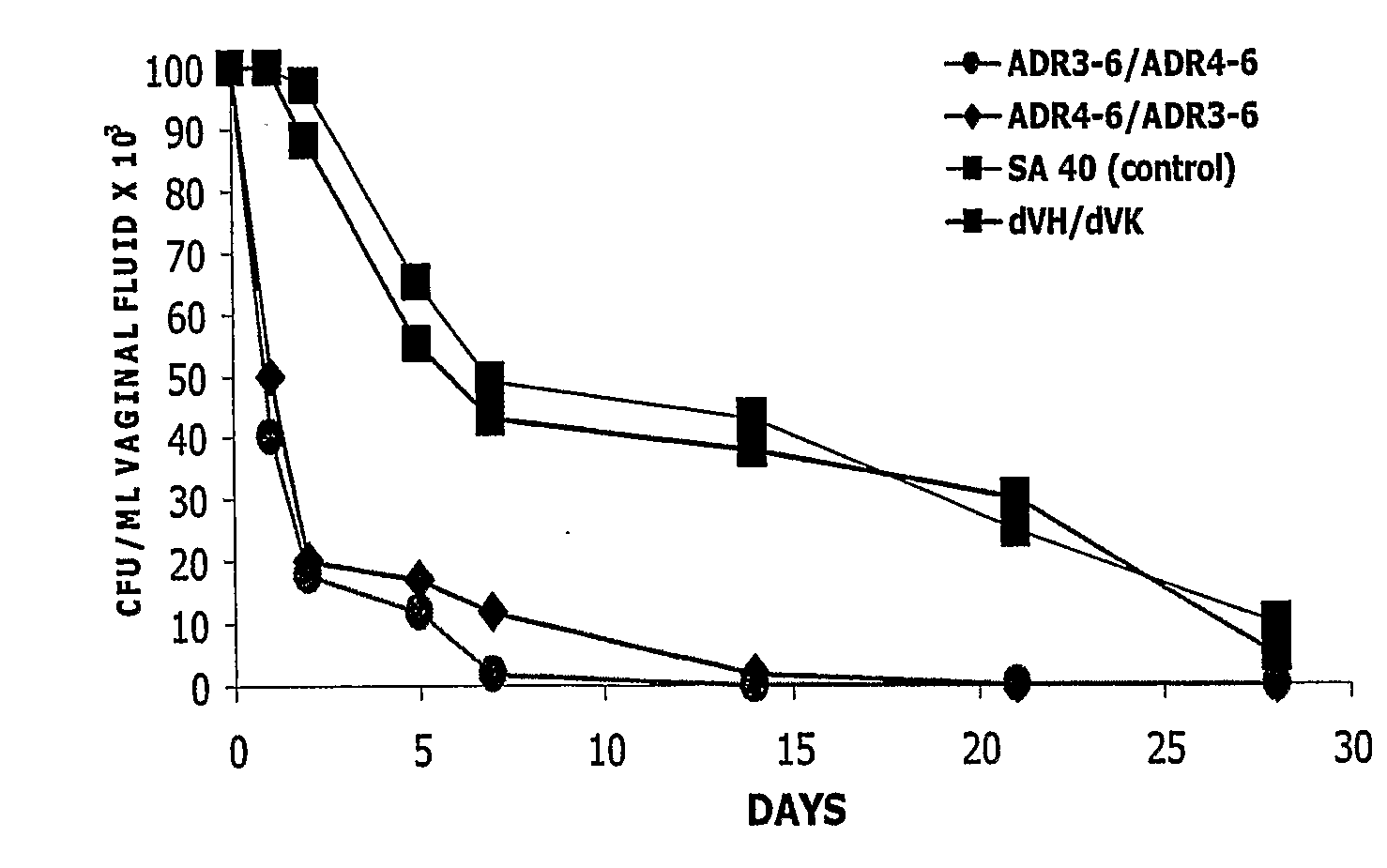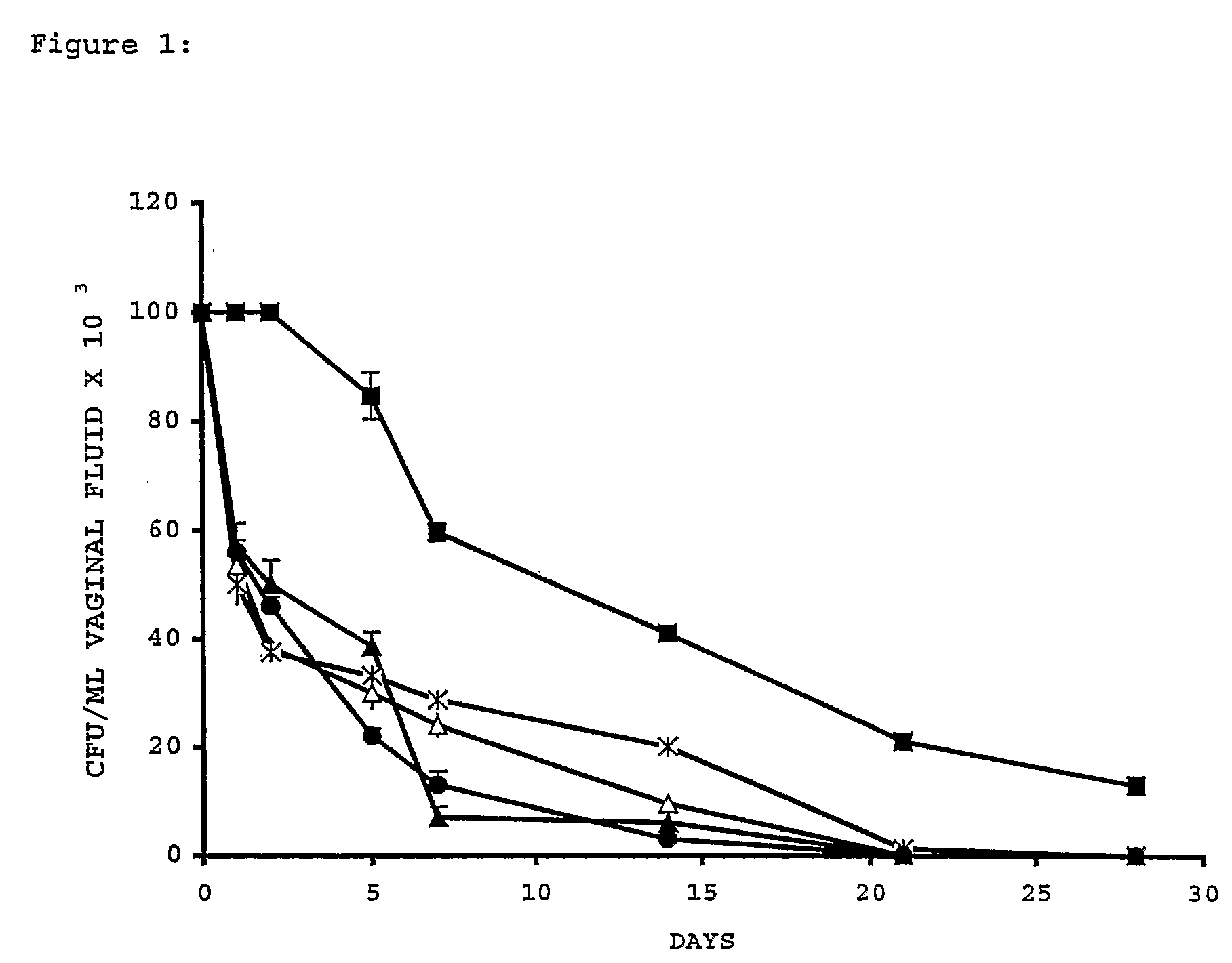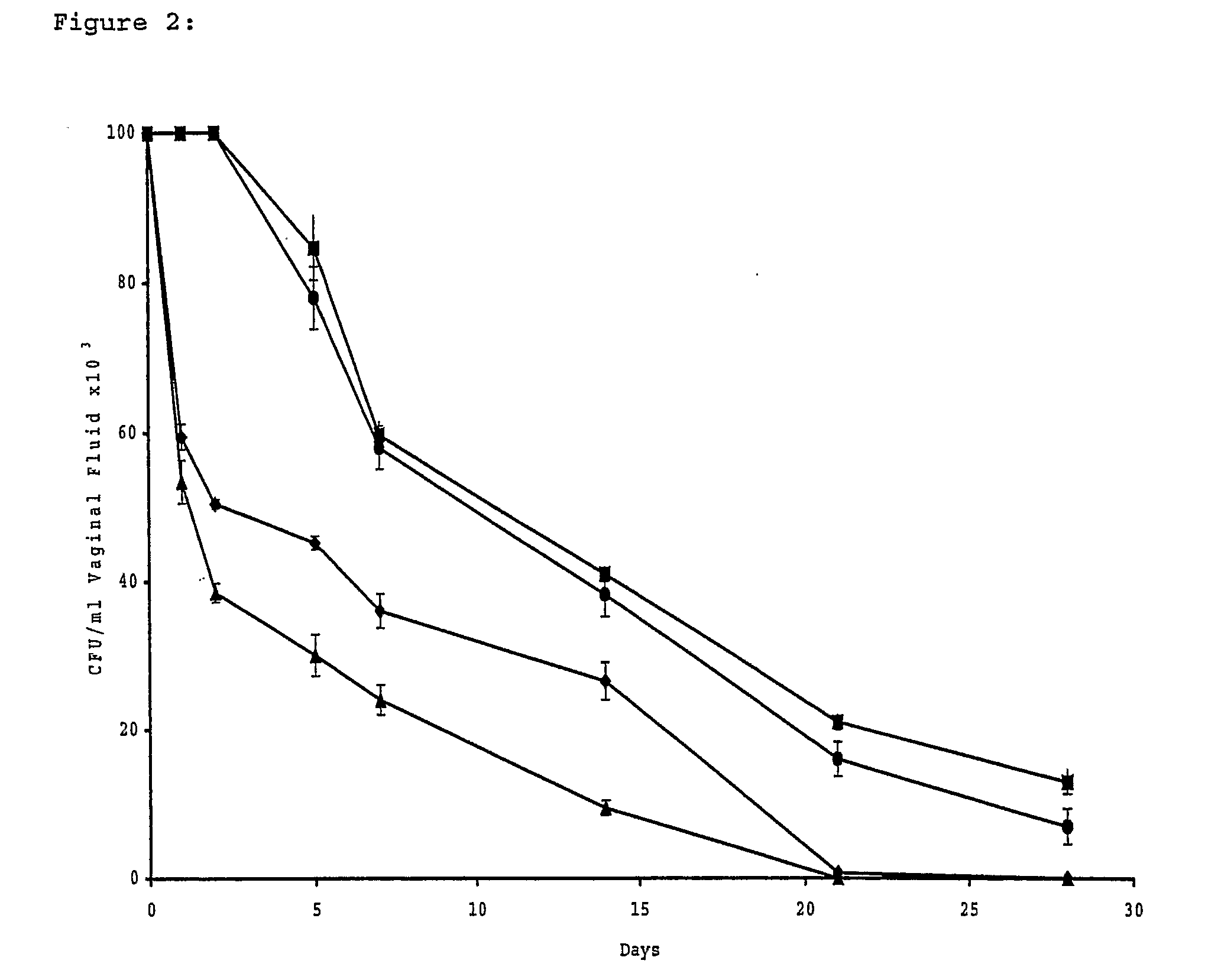Antibodies Against Candida Antigens
a technology of antigens and antibodies, applied in the field of domain antibodies, can solve the problems of difficult to generate protective vaccines, chronic vaginal candidiasis is hardly curable,
- Summary
- Abstract
- Description
- Claims
- Application Information
AI Technical Summary
Benefits of technology
Problems solved by technology
Method used
Image
Examples
example 1
Materials and Methods
Microrganism and Growth Conditions
[0211]Throughout this study the common laboratory yeast Candida albican was used. However, it is envisaged that the invention can be used to prevention or treat other yeast such as tropicalis, glabtrata, krusei, norvegensis or inconspicua.
[0212]Candida albicans strain SA40 and AIDS 68 were used throughout this study. SA40 was fully susceptible to fluconazole and other triazole drugs whereas the strain AIDS 68 was isolated from an AIDS patient as fluconazole resistant (i.e. MIC >64 μg / ml as defined by NCLLS methods). Both strains were routinely grown in Yeast-peptone-dextrose (YPD; 1% yeast extract, 2% bacto-peptone, 2% glucose, all w / v) or Yeast Nitrogen Base (YNB; 2% glucose, 0.17% yeast nitrogen base without amino acids and ammonium sulphate, 0.5% ammonium sulphate, w / v) or Winge (0.3% yeast extract, 0.2% glucose) or SDB (1% bacto-peptone, 2% dextrose) media at 28° C. All media were solidified with 2% agar.
[0213]Filamentation...
example 2
Results
[0237]1. dAbs Generation, Screening and Characterization
[0238]Refolded recombinant C. albicans proteins were tested for functional activity prior to dAb selection by phage display. SAP2 was tested by proteinase enzyme assay and showed good functionality which indicated a correctly folded structure. MP65 was refolded using the same method for SAP2, however functionality was not tested due to the lack of a robust assay. Four phage libraries with a combined size of greater than 1×1010 unique dAbs were used for selection with at least 1×1011 individual phage used for each round of selection (representing at least a 10 fold overrepresentation of the library diversity). Following three rounds of selection, phage output titres had increased by more than 5 logs. Both MP65 specific and SAP2 specific dAbs were isolated from the third round selection output by screening bacterial culture supernatants containing the expressed dAb for binding to passively adsorbed antigen by ELISA. Ten un...
example 3
Heterodimer Construction
[0253]DNA encoding the dabs ADR3-6 and ADR4-6 was cloned sequentially in both orientations into the expression vector pDOM5D-5U to generate two separate constructs (ADR3-6 / ADR4-6 and ADR4-6 / ADR3-6). This vector was based on pDOM5 (as pDOM4 described in the examples for monomer production but without the phage expression coding) and contained a linker situated between the dAb cloning sites.
Protein Expression:
[0254]Expression and purification as described for the monomer dabs using protein-A. Confirmation of protein purity was by SDS-PAGE with coomassie staining.
In Vivo Analysis:
[0255]Five oophorectomized female Wistar rats (80-100 g, Charles River Breeding Laboratories, Calco, Italy) per group were used. Animal maintenance and overall care was as described elsewhere (De Bernardis, F., et al. J. Infect. Dis. 161, 1276-1283 (1990). All rats were maintained under pseudo-oestrus by subcutaneous injections of 50 mg of oestradiol benzoate (Amsa Farmaceutici srl, Rom...
PUM
| Property | Measurement | Unit |
|---|---|---|
| Fraction | aaaaa | aaaaa |
| Frequency | aaaaa | aaaaa |
| Frequency | aaaaa | aaaaa |
Abstract
Description
Claims
Application Information
 Login to View More
Login to View More - R&D
- Intellectual Property
- Life Sciences
- Materials
- Tech Scout
- Unparalleled Data Quality
- Higher Quality Content
- 60% Fewer Hallucinations
Browse by: Latest US Patents, China's latest patents, Technical Efficacy Thesaurus, Application Domain, Technology Topic, Popular Technical Reports.
© 2025 PatSnap. All rights reserved.Legal|Privacy policy|Modern Slavery Act Transparency Statement|Sitemap|About US| Contact US: help@patsnap.com



